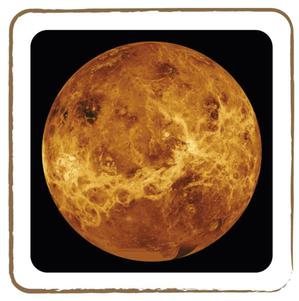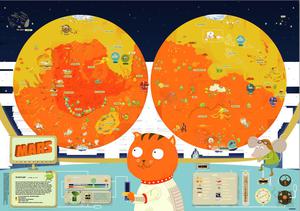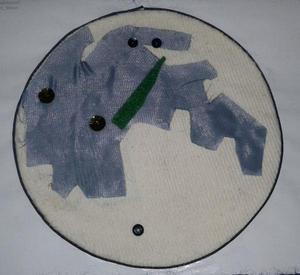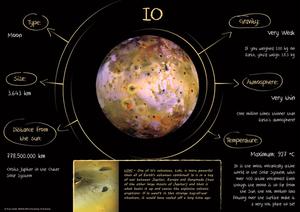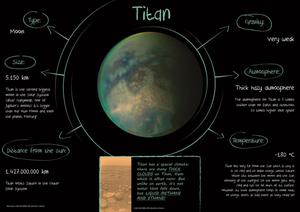Termine del Glossario Astrobiologia
Descrizione L'astrobiologia è un campo di indagine multidisciplinare che include nozioni di astronomia, biologia, fisica, geologia, chimica e altri campi scientifici per studiare la vita dalla sua origine, evoluzione e distribuzione nell'Universo, compresa la Terra, attualmente l'unico luogo conosciuto in cui c'è vita.
Termini correlati
Vedi questo termine in altre lingue
status del termine e della definizione La definizione originale di questo termine in inglese é stata approvata da un ricercatore astronomo e da un docente La traduzione di questo termine e della sua definizione sono state approvate da un ricercatore astronomo e da un docente
Il Glossario Multilingue OAE é un progetto dell'Ufficio IAU per la didatticadell'astronomia (OAE) in collaborazione con l'ufficio IAU OAO per la DivulgazioneAstronomica (OAO). I termini e le definizioni sono stater scelte, scritte eriviste da un impegno collettivo da parte di OAE, i Centri e i Nodi OAE e iCoordinatori Nazionali per la Didattica dell'Astronomia e da altri volontari.Potete trovare una lista completa dei crediti, Tutti i termini del glossarioE le definizioni sono pubblicate su Creative Commons CC BY-4.0 licenza e dovrebbero essere accreditate ad IAU OAE.
Se noti un errore di fatto o di traduzione in questo termine del glossario, per favore contattaci.
Attività correlate
Children's Planetary Maps: Venus
astroEDU educational activity (links to astroEDU website) Description: Learn more about our nearest neighbour
License: CC-BY-4.0 Creative Commons Attribuzione 4.0 Internazionale (CC BY 4.0) icone
Etichette:
Planetary cartography
, Spatial thinking
Fasce d'età
6-8
, 8-10
, 10-12
, 12-14
Livello di istruzione
Middle School
, Primary
, Secondary
Aree di apprendimento
Social Research
Costi:
Low Cost
Durata:
2 hours
Dimensione del Gruppo:
Group
Abilità:
Analysing and interpreting data
, Asking questions
, Communicating information
, Constructing explanations
, Developing and using models
, Engaging in argument from evidence
, Planning and carrying out investigations
Children's Planetary Maps: Mars
astroEDU educational activity (links to astroEDU website) Description: Explore planet Mars, learning how to use planetary maps!
License: CC-BY-4.0 Creative Commons Attribuzione 4.0 Internazionale (CC BY 4.0) icone
Etichette:
Maps
, Planetary cartography
Fasce d'età
6-8
, 8-10
, 10-12
, 12-14
Livello di istruzione
Middle School
, Primary
, Secondary
Aree di apprendimento
Social Research
Costi:
Free
Durata:
2 hours
Dimensione del Gruppo:
Group
Abilità:
Analysing and interpreting data
, Asking questions
, Constructing explanations
Children's Planetary Maps: The Moon
astroEDU educational activity (links to astroEDU website) Description: An up close look at our own satellite
License: CC-BY-4.0 Creative Commons Attribuzione 4.0 Internazionale (CC BY 4.0) icone
Etichette:
Maps
, Planetary cartography
, Spatial thinking
Fasce d'età
6-8
, 8-10
, 10-12
, 12-14
Livello di istruzione
Middle School
, Primary
, Secondary
Aree di apprendimento
Social Research
Costi:
Low Cost
Durata:
2 hours
Dimensione del Gruppo:
Group
Abilità:
Analysing and interpreting data
, Asking questions
, Communicating information
, Constructing explanations
, Developing and using models
, Engaging in argument from evidence
, Planning and carrying out investigations
Children's Planetary Maps: Io
astroEDU educational activity (links to astroEDU website) Description: Learn about the most geologically active world in our Solar System
License: CC-BY-4.0 Creative Commons Attribuzione 4.0 Internazionale (CC BY 4.0) icone
Etichette:
Maps
, Planetary cartography
, Spatial thinking
Fasce d'età
6-8
, 8-10
, 10-12
, 12-14
Livello di istruzione
Middle School
, Primary
, Secondary
Aree di apprendimento
Social Research
Costi:
Low Cost
Durata:
2 hours
Dimensione del Gruppo:
Group
Abilità:
Analysing and interpreting data
, Asking questions
, Communicating information
, Constructing explanations
, Developing and using models
, Engaging in argument from evidence
, Planning and carrying out investigations
Children's Planetary Maps: Titan
astroEDU educational activity (links to astroEDU website) Description: Learn about the only other known body in the Solar System with Seas and Lakes
License: CC-BY-4.0 Creative Commons Attribuzione 4.0 Internazionale (CC BY 4.0) icone
Etichette:
Maps
, Planetary cartography
, Spatial thinking
Fasce d'età
6-8
, 8-10
, 10-12
Livello di istruzione
Middle School
, Primary
, Secondary
Aree di apprendimento
Social Research
Costi:
Low Cost
Durata:
2 hours
Dimensione del Gruppo:
Group
Abilità:
Analysing and interpreting data
, Asking questions
, Communicating information
, Constructing explanations
, Developing and using models
, Engaging in argument from evidence
, Planning and carrying out investigations
